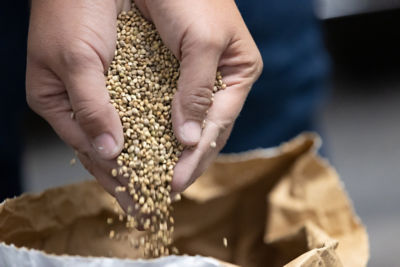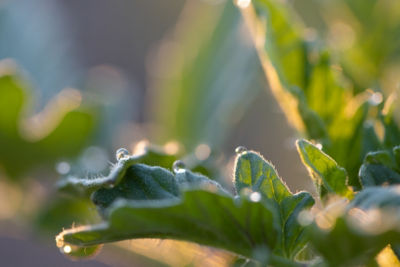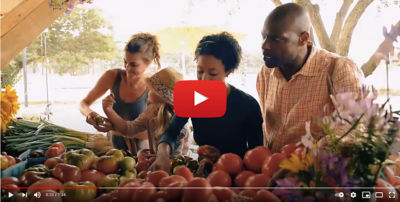
We’ve all heard it before, if we want to feed the world by 2050, then we need to produce 60 per cent more food. Doing that with a farming-as-usual approach will take too heavy a toll on our natural resources.1 The world population is increasing exponentially whereas food production has increased only arithmetically, meaning that the availability of food per capita has decreased.2
Protected growing environments have a critical role in meeting this demand. Our Vegetables by Bayer teams are partnering with growers in greenhouses and other protected environments to help them produce more high-quality vegetables year-round, share insights about the latest consumer needs and growing developments, and develop shared success for the entire food value chain. In doing so, together we’re helping to advance the potential of protected growing environments to provide year-round affordable access to fresh fruits and vegetables using less land and resources.3
With this article, we invite you to learn more about the crucial role protected environments play in increasing resource-efficient production of high-quality fruits and vegetables to feed the world and help combat the negative impact of climate change.
How protected environments are helping to improve resource efficiency and reduce costs
A protected environment, such as a greenhouse or glasshouse, is a production process that leverages human intelligence, technology, and innovation to grow crops in a controlled environment.4 Some of the biggest advantages of these environments is the ability to achieve optimal growing conditions through greater control over light, temperature, moisture, pest and disease management, as well as enabling greater efficiency of natural resources such as water, fertilizers, and crop protection products.5
However, many of these systems require large amounts of energy, resulting in the most significant input costs and carbon footprint of these operations. In fact, energy accounts for the highest cost greenhouse operators have, directly driving growers around the world to look for new ways to make greenhouses more sustainable both environmentally and economically.
One of these innovative growers our Bayer team is working with is Longvine Growing Co, a major North American greenhouse grower. Their Utah-based operation has been referred to as “The Future of Farming” due to its use of sustainable energy systems. As part of its innovative approach, the team built a greenhouse next to an existing natural gas power plant that utilizes both surplus heat and surplus CO2; both waste products of the power plant are significant in fueling year-round production. Sited next to the plant, they can upcycle the surplus heat and CO2 from the power plant directly into the greenhouse. This, combined with supplemental lighting, delivers fresh, tasty tomatoes 365 days a year creating a great circular economy example for food production.6
“LongVine is just one of numerous producers around the world who are looking for innovative ways to reduce their energy consumption, carbon footprint and improve their production quality and efficiency. These initiatives do not just impact the bottom line, they also advance the overall environmental sustainability of protected growing environments.”
At Bayer, we’re working to develop more partnerships like our collaboration with BraZander, a high-tech production company owned and operated by Rob Brabander and Paul Zantman using modern technology-driven innovations to sustainably grow vegetables. We partnered with the BraZander team in 2018 to establish the De Ruiter Experience Center located in the Netherlands, which showcases how new tomato varieties are being developed and produced using the latest breeding, cultivation, digital, recycling, and sustainable pest management technologies as well as intelligent glasshouse climate steering.7
Tomato varieties bring the best characteristics to secure quality harvests all year, long shelf life, improved taste, and have more efficient resource utilization.8 Here, the irrigation systems use a climate computer system to manage fertilizer and water rates, time matched to light availability and plant growth rates to ensure water efficiency. Surplus water is sanitized and reused so no water is wasted.
How protected environments and seed innovations help deliver more nutritious foods while protecting the environment
Protected environments supply local production of affordable, nutritious, and delicious fresh produce for a growing population. Improving the efficiency of these environments with new tools and resources around the world will enable more growers and farmers to deliver even more high-quality fresh products to more communities and consumers.
Strabena tomatoes’ strong attachment to the vine reduces the need for plastic packaging, meaning less plastic pollution and a lower carbon footprint. In fact, it is estimated that traders are using 10% less plastic packaging for Strabena tomatoes which equals a reduction of ~16,000 packages with plastic entering the waste stream for each hectare of tomatoes harvested. Traders are instead favoring reusable cartons that consumers can simply grab the truss with tomatoes and go, or a simple recyclable container with no plastic. Strabena tomatoes give traders the opportunity to reduce plastic waste and promote sustainability throughout the value chain while delivering high-quality nutritious food to consumers.
This is just the beginning
The Vegetables by Bayer team is committed to continuous innovation in sustainable food supply with seed selections, digital solutions, new technologies, and partnerships across the food value chain to improve future success for everyone. We see a significant increase of sustainable production in protected environments around the world meeting increased food demand in our changing climate, safeguarding precious resources, and delighting consumers.9
“Bayer Research and Development teams are hungry to create new and exciting innovative solutions that enable farmers to reduce their environmental footprint and strengthen food security globally. These innovations range from reduced losses along the chain to creating varieties more resilient to climate change. Our commitment is to play an active role to advance sustainably-grown vegetables to benefit growers, consumers, the value chain, and the planet.”
I believe that we’re all clear about our goal, where we go as an industry, and what drives us together; we’re here to feed the world, to build the backbone of a secure and sustainable fresh produce supply and to build the strongest possible sustainable food ecosystem.
This is just the beginning as growers and value chain partners continue to develop fresh solutions and technology. At Bayer, we’re committed to go beyond the seed, along with our partners, to make sure we continue to delight consumers with sustainably produced resourceefficient, affordable, nutritious, and delicious fresh produce.
Join us in our journey to “Health for All. Hunger for None.”
Anne Williams Protected Segment Lead, Vegetable Seeds at Bayer Crop Science
SOURCES
1 United Nations. (2022). Feeding the World Sustainably. https://www.un.org/en/chronicle/article/feeding-worldsustainably#:%7E:text=According%20to%20estimates%20compiled%20by,toll%20on%20our%20natural%20resources.
2 Omer, A. M. (2016). Sustainable Food Production in Greenhouses and its Relations to the Environment. Advances in Plants & Agriculture Research, 5(3). https://doi.org/10.15406/apar.2016.05.00182
3 De Ruiter Experience Center. (2018). Vegetables by Bayer. https://www.vegetables.bayer.com/gb/en-uk/about/de-ruiterexperience-center.html
4 A. (2021, April 5). A Complete Information About Protected Cultivation in India. Blog – Tractor Junction.https://www.tractorjunction.com/blog/a-complete-information-about-protected-cultivation-in-india/
5 Salazar, A., & Rios, I. (2010). Sustainable Agriculture: Technology, Planning and Management (Agriculture Issues and Policies) (UK ed.). Nova Science Pub Inc.
6 Our Story | About Us | Welcome to Houweling’s. (2014). Houwelings Tomatoes. http://www.houwelings.com/files2/about-us.php
7 A Partnership for Technology-Driven Sustainable Agriculture. (2018). Global Bayer. https://www.bayer.com/en/agriculture/brazander-bleiswijk-netherlands
8 A Partnership for Technology-Driven Sustainable Agriculture. (2018). Global Bayer. https://www.bayer.com/en/agriculture/brazander-bleiswijk-netherlands
9 Strickler, J. (2020, August 28). High-Tech Greenhouses Could Be The Future Of Agriculture. Forbes. https://www.forbes.com/sites/jordanstrickler/2020/08/28/high-tech-greenhouses-could-be-the-future-ofagriculture/?sh=6d119579380f
Bayer, Bayer Cross, Seminis and De Ruiter are registered trademarks of Bayer Group. ©2022 Bayer Group. All rights reserved.




